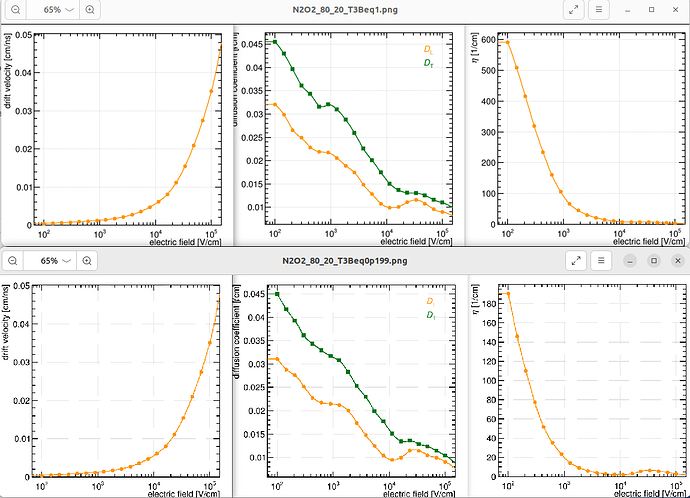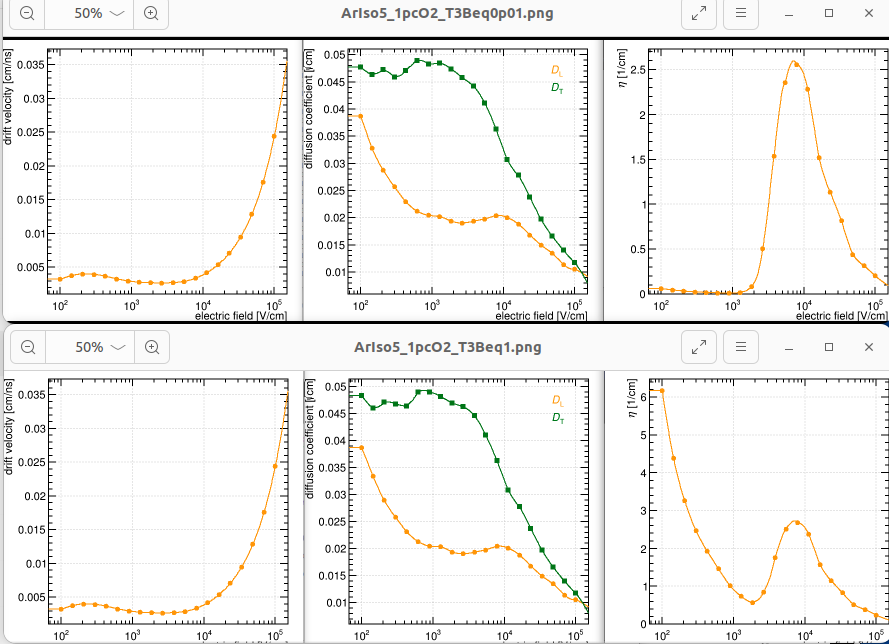Dear Piet,
Sorry for bothering again…
I followed your suggestion by modifying magboltz.f and change the T3B from 1 to 0.01.
I can confirm the results from Total ionization and free electron fraction (FEF) - #23 by Piet for dry air with T3B = 1 and 0.199 respectively,
concerning a mixture of N2/O2 (80.1:19.9)% as shown in the attached picture
My new question is related to if for the following mixtures of: Ar 94.05%, iC4H10 4.95%, O2 1%
and Ar 92.07%, CO2 6.93%, O2 1% the same procedure should be followed with T3B = 0.01…
For the 1st mixture I obtain:
The results using the same 2 // plate configuration for a simplified micromegas indicate that the addition of 1% of O2 are shown in:
Where top 3 plots are for Ar 95%, iC4H10 5%
middle 3 plots for Ar 92.07%, CO2 6.93%, O2 1% with T3B = 0.01
bottom 3 plots for Ar 92.07%, CO2 6.93%, O2 1% with T3B = 1
That sounds quite strange to me, since as far as remember, from the measurement one performed, one saw a significant (I.e. about a factor 2 or even more) gain drop for a gas contamination of about 0.1% (or even less) so that may match better with the unmodified MagBoltz version that with the one taking into account 3-body attachment.
In magboltz.f is stated that SCALING FACTOR NORMALLY PROPORTIONAL TO OXYGEN FRACTION IN RARE GAS MIXTURES…
Is it sure that for gases like Ar 94.05%, iC4H10 4.95%, O2 1%
and Ar 92.07%, CO2 6.93%, O2 1% one should apply the T3B = 0.01 modification?
Thanks a lot in advance
Best regards
Georgios


